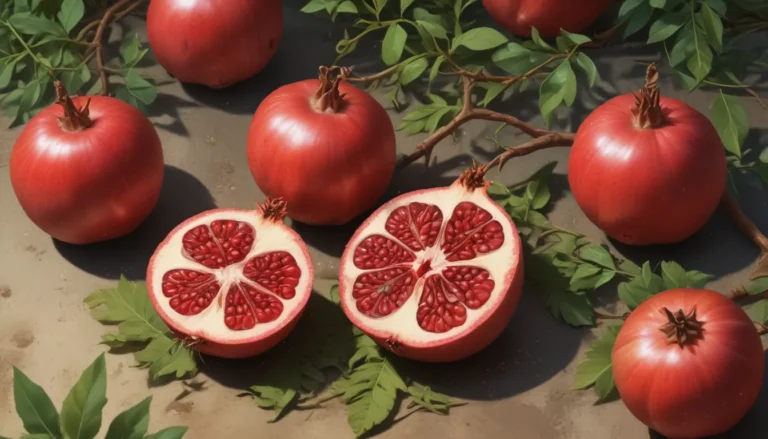Growing Delicious Pears: A Comprehensive Guide

Growing fruit is a rewarding experience, particularly when it comes to pears. These unique fruits have a delightful taste when picked firm and ripened at room temperature after harvesting, adding an extra layer of intrigue to the cultivation process. Furthermore, most types of pears require cross-pollination to bear fruit, making them a distinct addition to your orchard. Ready to delve into the world of pear cultivation? This in-depth guide will equip you with all the necessary information to get started and ensure a successful harvest.
What You’ll Learn
Let’s start by breaking down what you’ll discover in this guide:
- Three Types of Pear Trees
- Cultivation and History
- Picking a Tree to Grow and Cultivars to Select
- Propagation
- What Are Grafted Pears?
- How to Plant
- How to Grow
- Growing Tips
- Maintenance
- Managing Pests and Disease
- Harvesting and Storage
- Preserving
- Recipes and Cooking Ideas
- Quick Reference Growing Guide
Now, let’s dive into each of these aspects to help you grow flourishing pear trees in your orchard.
Three Types of Pear Trees
There are three main types of pear trees – European, Asian, and ornamental pears. While European pears, scientifically known as Pyrus communis, are the common choice for home orchards due to their delightful taste, Asian pears bring unique attributes and needs to the table. On the other hand, ornamental pear trees, particularly the callery pear tree, may not bear fruit and can be invasive.
Cultivation and History
The cultivation of pears dates back thousands of years, with evidence of growth in China dating back at least 5,000 years. Native to parts of Asia, Europe, and the United States, pears have a rich historical significance and have inspired artistic admiration throughout the ages. Today, they are among the most widely-marketed fruits globally, with the majority of commercial production centered in certain regions of the US.
Picking a Pear Tree to Grow and Cultivars to Select
When it comes to selecting a pear tree for your orchard, several factors need consideration. From choosing between self-fruitful varieties or those needing cross-pollination to determining hardiness zones and fire blight resistance, careful planning is essential. Understanding which cultivars thrive in your area and the ideal growing conditions for pear trees will set the stage for a successful harvest.
Propagation
Most saplings available at nurseries are propagated through grafting or budding, ensuring a clone of the parent tree’s quality. While growing pears from seed is not recommended due to potential variations, propagating your own trees through cuttings can be an engaging and educational process.
What Are Grafted Pears?
Grafted pears offer a consistent and reliable way to reproduce desired traits from parent trees. The grafting process involves attaching a bud chip from a parent tree to a rootstock, ensuring that the new tree retains all the positive qualities of the parent. Understanding the grafting process is crucial when planting and positioning trees for optimal growth.
How to Plant
Planting pear trees in the fall allows them to establish before spring growth, while late winter or early spring planting works well for bare-root trees. Conducting a soil test to check for necessary amendments, ensuring proper positioning, and following essential planting steps will set the foundation for healthy tree growth.
How to Grow
Pear trees require minimal attention, especially once they establish a viable root system. Adequate watering during dry spells and strategic fertilization will promote healthy growth. Pruning, maintaining proper spacing, and managing growth ensure the trees’ overall health and fruit productivity.
Growing Tips
- Space full-size varieties 20-25 feet apart and dwarf types 8-10 feet apart.
- Choose a location with at least six hours of direct sunlight daily.
- Provide thorough watering after planting and during dry spells to establish healthy root systems.
Maintenance
Pruning pear trees lightly annually helps maintain a fuller, healthier shape and promotes fruit production. Properly disposing of fallen fruit and leaves, along with winter protection like tree guards, safeguards trees from pests and diseases.
Managing Pests and Disease
Pear trees are generally resistant to pests and diseases, but vigilance is key to identifying and addressing potential threats. Common pests like aphids, fruit worms, and mites, along with diseases like fire blight and pear leaf spot, require monitoring and appropriate treatments for healthy tree growth.
Harvesting and Storage
Harvesting pears at the right time, before they turn soft, ensures optimal flavor and quality. Proper storage conditions, including ripening at room temperature, provide an enjoyable fruit-eating experience. Understanding when the fruit is ready for picking and how to store it ensures a bountiful harvest.
Preserving
Preserving pears through canning, drying, or making fruit leather enhances their longevity and versatility. Experimenting with various preserving methods can yield delicious results and expand your culinary options.
Recipes and Cooking Ideas
Pears are versatile fruits that shine in a variety of recipes, from desserts like pies and crisps to savory dishes like salads and sauces. Incorporating fresh pears into your culinary creations adds a unique flavor and texture and provides a delightful culinary experience.
Quick Reference Growing Guide
To summarize, refer to the quick guide below for a comprehensive overview of growing pear trees, including essential details on maintenance, hardiness, soil requirements, pests, and diseases.
- Plant Type: Perennial fruit tree
- Maintenance: Low
- Hardiness (USDA Zone): 3-9
- Exposure: Full sun
- Time to Maturity: 3-10 years
- Spacing: Standard 20-25 feet (12-15 feet dwarf)
By following these comprehensive guidelines and tips, you can embark on a fruitful journey of growing delicious pears in your own orchard. Remember to nurture your trees with care and enjoy the bountiful rewards of your labor. Have you had success with growing pear trees? Share your experiences and insights in the comments below. Happy growing!





